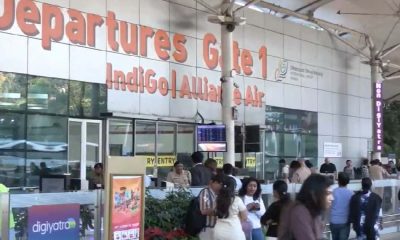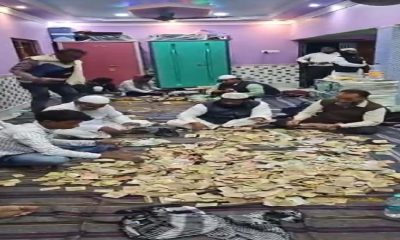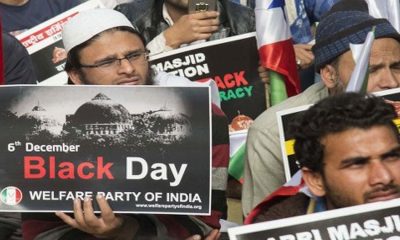General
BMC’s Commitment to a Secure Mumbai
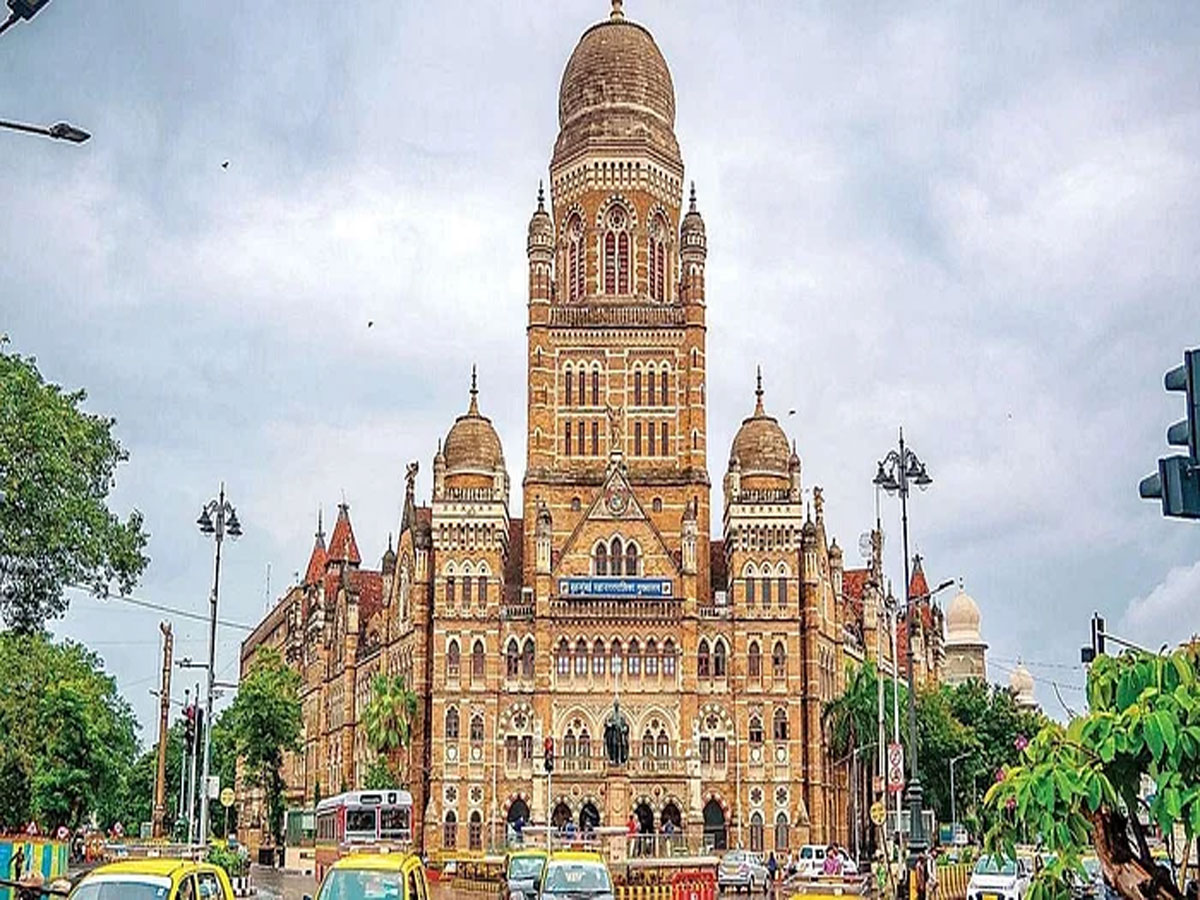
Mumbai, known as the financial capital of India, the provenance of the Bollywood, and a hub of aspirations for millions of Indians, has emerged as a distinctive metropolis. Its exceptional features are the result of well-planned infrastructure in terms of basic amenities, industries, transportation, healthcare, education, tourism, and more. Amidst this diversity, Mumbai’s geographical composition is also uniquely remarkable. Surrounded by the sea on two sides and a creek on another side, this metropolis has witnessed challenges throughout its history. Apart from providing civic services and amenities, the parent organisation of Mumbai, the Brihanmumbai Municipal Corporation (BMC) also takes on the significant responsibility of formulating contingency plans for natural and man-made crises and managing such situations too.
BMC has always prepared to address various disasters and crises that may arise, to ensure the safety and well-being of the citizens of Mumbai. While continuously striving to provide excellent basic amenities for the residents of Mumbai, BMC takes proactive measures to plan appropriate solutions in challenging circumstances. A vital component of this proactive approach is the Disaster Management Department of BMC. Mumbai has faced numerous challenges in the past, such as heavy rainfall, floods, landslides, terrorist attacks, building collapses, fire incidents, and other disasters. The catastrophic flood in 2005 and the terrorist attack in 2008 are the major crises that have occurred in Mumbai until now. In both these crises, the well-organized and planned disaster management mechanism implemented by BMC played a crucial role in mitigating the situation and bringing Mumbai back to normalcy within the shortest possible time.
However, despite such achievements, the need for coordination, well-equipped infrastructure, and skilled manpower in all areas of disaster management has been brought to the fore by these two incidents. Hence, the journey of the BMC’s Disaster Management Department has now reached a phase where it is embracing artificial intelligence, machine learning, and other forms of advanced knowledge to enhance its preparedness. This transformative journey aims to augment human intelligence and expertise with technological advancements, thereby ensuring a multi-pronged and experiential approach to crisis management.
In 1993, Maharashtra witnessed a devastating earthquake centered in the Killari region of Latur district. As a result, the Government of Maharashtra decided to establish disaster control rooms in each district and municipal corporation to coordinate and facilitate effective communication among the administration during times of disasters. In 1999, BMC established a disaster management control room in the basement of its expanded headquarters building. Initially, this control room had limited manpower and resources but served the purpose of communication and coordination during emergencies. At that time, there was not much awareness or development of scientific perspectives for identifying potential threats. In such circumstances, BMC began work on disaster management measures.
Furthermore, in 2005, Mumbai faced a catastrophic flood due to unprecedented rainfall. This unexpected celestial crisis brought Mumbai to a standstill. However, BMC and the Disaster Management Department made relentless efforts with all available resources and played a crucial role in restoring normalcy to the lives of Mumbai’s residents within 48 hours. Despite being confined to a small area of about 500 square feet, the Disaster Management Department efficiently coordinated with various agencies and carried out its tasks with utmost dedication.
However, this incident highlighted the need to further strengthen the preparedness of the Disaster Management Department.
Under BMC, the expansion of the Disaster Management Department took place in 2006. Accordingly, the manpower in the Emergency Operation Center (EOC) was increased and they were given the latest training. In 2016, with the aim of making this department more effective, the number of hotlines was increased, and the Maharashtra government provided over 5,000 CCTV cameras under the Mumbai Surveillance Project for direct deployment to enhance video surveillance capability.
Additionally, various state-of-the-art equipment were made available. In 2008, BMC began utilizing IT resources to deal with incidents such as terrorist attacks, bomb blasts, landslides, fires, and building collapses that pose a threat to public safety. Through the use of information technology, the foundation of essential information databases for prohibition, mitigation, and preparedness was established. Geographic Information Systems (GIS) became the basis for this information system.
GIS made possible the availability of information on various tools, resources, and manpower for handling disasters that occur in specific locations. As a result, it became possible to make effective decisions, plan measures, and implement them during emergencies.
Considering past incidents and potential future crises, the decision has now been made to use Artificial Intelligence (AI) to manage disasters. Through this medium, the city of Mumbai will be able to plan disaster management based on an assessment of various potential threats. The estimation of various disasters will be done in advance through AI and machine learning. The analysis of these estimates using scientific methods will allow timely decision-making and reduce the risk of potential disasters.
To manage various disasters and implement preparedness and mitigation plans, the municipal corporation plays a coordinating role as the nodal agency under the Disaster Management Act 2005. A systematic approach has been adopted to ensure a reliable methodology, making it easier to engage with all related systems. Focus is not only on the systems. Public awareness, training, and public participation have also been given due attention by the municipal corporation. Initiatives have been continuously undertaken to educate citizens and students about disasters. In this regard, under BMC, the City Disaster Management Training Center has been established in Parel. This four-story building houses a 150-capacity 3D theater, training rooms, state-of-the-art simulation facilities, and other amenities.
Currently, several important development projects such as the Coastal Road, are underway in Mumbai, focusing on essential infrastructure. These projects aim to ensure sustainable development and minimize potential risks by adhering to all regulations of the Indian Standard 1893 about earthquake resistant structures.
The city of Mumbai is expanding not only horizontally but also vertically. Therefore, fire safety measures, including the installation of fire suppression systems, have been made mandatory in tall buildings to prevent incidents such as loss of life and financial damage. Additionally, every six months, each building must undergo a fire safety inspection and the self-declaration must be submitted on the BMC portal. To enforce these measures, all buildings are required to comply with the Maharashtra Fire Prevention and Life Safety Measures Act of 2009.
Considering the heavy monsoon rain and high tide situations there is a need for proper planning to address the issue. Consequently, initiatives have been taken to drain flood water and implement solutions based on geographical considerations. BMC is always prepared for such situations.
BMC has taken initiatives to rejuvenate all rivers flowing in Mumbai. Protection walls have been constructed to ensure the safety of citizens residing along the banks of rivers and nallas. Regular maintenance of these water bodies are carried out to maintain cleanliness by removing silt, garbage, and waste. In certain areas, underground water storage tanks have been built to increase the capacity of storing water, allowing the collection of millions of liters of flood water. Pumping stations have been built in different parts of Mumbai to facilitate quick drainage of excess rainwater into the sea.
In terms of disaster management, BMC has implemented various measures to ensure preparedness. Regardless of the severity of any emergency situation, our duty is to safeguard the lives and financial well-being of the residents of Mumbai. I take great pride in the fact that BMC is always ready to fulfill this responsibility, even in times of crisis.
Maharashtra
Preparations for Sunni Dawat-e-Islami’s three-day global Sunni gathering in full swing

Mumbai: Like every year, this year too, the 33rd annual gathering of the Sunni Dawat-e-Islami Movement is being held on Friday, Saturday and Sunday, December 12, 13 and 14 at Azad Maidan, Wadi Noor, opposite CST, Mumbai. Like last year, this year too, the gathering on the first day, Friday, will be for women only, while the remaining two days will be reserved for men. Insha Allah, many scholars, preachers and mashaikhs from the country and abroad will participate in this global gathering. The preparations for the gathering were started last Saturday in the evening after the weekly central gathering. Urdu Media In-charge Maulana Mazhar Hussain Alimi said that the leaders of the movement are making full efforts to make the three-day gathering a success. Efforts are being made to provide all possible facilities so that the audience and attendees do not face any kind of trouble. As per tradition, this year too, the three-day global gathering will be broadcast live on sdichannel, which will be directly accessible to those who wish to learn religious teachings from all over the world. The women’s gathering on the first day will feature speeches on important topics such as “Women’s Intellectual Taste”, “Women’s Real Ornament: High Character and Modesty”, and “Women’s Share in Inheritance”. In addition, the researcher of modern issues Hazrat Mufti Muhammad Nizamuddin (President Mufti of Jamia Ashrafia Mubarakpur) will answer questions asked by women about Islam. Ameer Sunni Dawat-e-Islami and the spiritual leader of this gathering, the great preacher Hazrat Maulana Muhammad Shakir Noori, has appealed to people to participate in the gathering as much as possible, understand the message of religion and act on it. Ameer Sunni Dawat-e-Islami has said that they should also come and bring their friends and thus become a means of transmitting religion. He has appealed to Muslims to send women from their homes to the gathering on the first day so that they can Attend the gathering to learn religious teachings, improve themselves and advise others. There will be important speeches by great scholars and preachers in the gathering on the second and third days. There will be detailed speeches on important topics such as “The Miracle of the Holy Quran”, “The Spiritual Life of the Holy Prophet (PBUH), “The Envoy of Peace (PBUH), “Searching for Humans in Humans”, “Ethics and Spiritual Training of Youth”, “Religious Information and Artificial Intelligence”, “Signs of the Pleasure and Displeasure of Allah Almighty”. Islamic thinker Allama Qamar-uz-Zaman Azmi (Secretary General World Islamic Mission London) will deliver a speech on the third day. Insha Allah, the commentator of the Quran, Khalifah Mufti Azam Hind, Hazrat Allama Zaheeruddin Khan Rizvi, will also deliver an insightful speech. In the gathering on the third day, there will be a gathering after Zuhr prayers, followed by a lecture on the latest issues of Bukhari Sharif, in which the last hadith of Bukhari Sharif will be delivered by Hazrat Allama Mufti Muhammad Nizamuddin Rizvi (Jami’ Ashrafia Mubarakpur). On this occasion, prayers are accepted in the presence of the Lord, so be sure to participate in this prayer as well.
In order to facilitate the participants of the gathering, a large number of ablution rooms and toilets are being built, and more than sixty cameras are being installed throughout the gathering as part of security arrangements. In addition, about two thousand women will volunteer for the women’s gathering, while more than one thousand male volunteers will serve in the gathering on the second and third days. The police have requested the participants of the gathering not to bring handy cameras, laptops, wires, batteries, matchboxes, lighters, nail cutters and other electronic equipment that runs on batteries. For security reasons, parking of motorcycles or any other vehicle around the Azad Maidan is not allowed.
Maharashtra
Azmi demands in Nagpur Assembly that Navi Mumbai Airport be named after Chhatrapati Shahu Maharaj
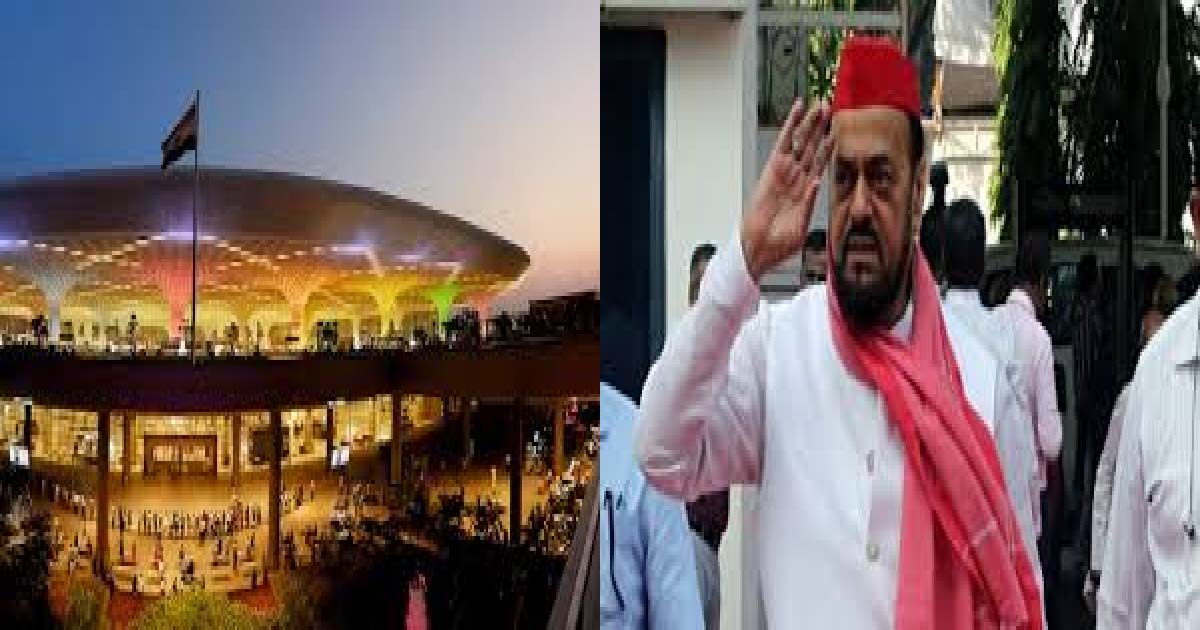
Mumbai: In the Mumbai Maharashtra Nagpur winter session, Member of Assembly Abu Asim Azmi has demanded that the Navi Mumbai Airport be named after Chhatrapati Shahu Maharaj. He said that he died in Mumbai on May 6, 1922, so the Navi Mumbai Airport should be named after Shahu Maharaj. He said that Shahu Maharaj has always served Dalits, backward classes, educational reservation and equality and it is to his credit that Dalits and backward classes are provided with reservation and other facilities. He said that the Navi Mumbai Airport should be named after a great leader. Since the airport is a transportation hub, naming the airport after Chhatrapati Shahu Maharaj is a tribute to him.
Maharashtra
Azmi’s unique protest… Wearing a mask, he reached Nagpur Assembly with a banner demanding effective action to end toxic air pollution in Mumbai, SMS company
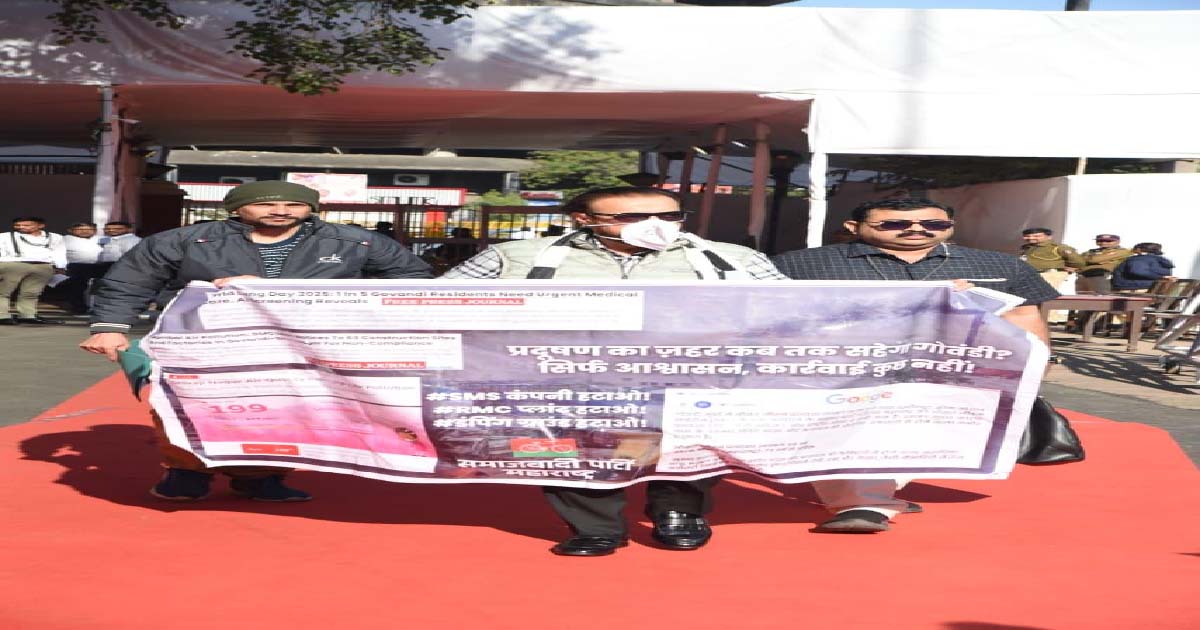
Mumbai: Air pollution and toxic atmosphere are common in Mankhurd Shivaji Nagar. The people of Shivaji Nagar and Govindi are facing toxic fumes every day. Successive governments have neglected this area because it is a poor neighbourhood.
On the second day of the winter session of the Assembly today, the Samajwadi Party (SP) made a clear demand.
It has demanded the immediate closure of the SMS company, RMC plant, and dumping ground and made it clear to the government that it should stop playing with the lives of the common man.
The government should take effective steps to eliminate this toxic air pollution. Abu Asim Azmi said that due to the SMS company in Govandi, the average age of people has increased to 39 years and diseases are spreading due to burning waste and chemical materials in it, so it should be banned immediately. He further said that clean sanitation and other facilities should be available in Govandi and such a factory should be closed so that the people can live a healthy life. Abu Asim Azmi protested against the toxic air outside the Nagpur Assembly in a very unique way by holding a banner and wearing a mask.
-

 Crime3 years ago
Crime3 years agoClass 10 student jumps to death in Jaipur
-

 Maharashtra1 year ago
Maharashtra1 year agoMumbai Local Train Update: Central Railway’s New Timetable Comes Into Effect; Check Full List Of Revised Timings & Stations
-

 Maharashtra1 year ago
Maharashtra1 year agoMumbai To Go Toll-Free Tonight! Maharashtra Govt Announces Complete Toll Waiver For Light Motor Vehicles At All 5 Entry Points Of City
-

 Maharashtra1 year ago
Maharashtra1 year agoFalse photo of Imtiaz Jaleel’s rally, exposing the fooling conspiracy
-

 National News1 year ago
National News1 year agoMinistry of Railways rolls out Special Drive 4.0 with focus on digitisation, cleanliness, inclusiveness and grievance redressal
-

 Maharashtra1 year ago
Maharashtra1 year agoMaharashtra Elections 2024: Mumbai Metro & BEST Services Extended Till Midnight On Voting Day
-

 National News1 year ago
National News1 year agoJ&K: 4 Jawans Killed, 28 Injured After Bus Carrying BSF Personnel For Poll Duty Falls Into Gorge In Budgam; Terrifying Visuals Surface
-

 Crime1 year ago
Crime1 year agoBaba Siddique Murder: Mumbai Police Unable To Get Lawrence Bishnoi Custody Due To Home Ministry Order, Says Report





